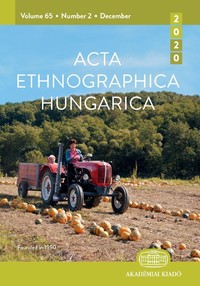Traditional Ecological Knowledge in Connection with Non-Domesticated Animals in the Slovenian and Hungarian Borderland
Traditional Ecological Knowledge in Connection with Non-Domesticated Animals in the Slovenian and Hungarian Borderland
Author(s): Viktor Ulicsni, Dániel BabaiSubject(s): Cultural Anthropology / Ethnology
Published by: Akadémiai Kiadó
Keywords: ethnozoology; folk taxonomy; Őrség; species knowledge; traditional ecological knowledge (TEK); borderland
Summary/Abstract: Although a significant proportion of folk knowledge of nature concerns knowledge of invertebrates and vertebrates living in the wild, very little ethnozoological research has been carried out in Central Europe focusing on the whole fauna. In writing the present paper, our aim was to contribute to filling this gap by interviewing 40 local farmers who are particularly knowledgeable on this topic, half of them from the Őrség region of Hungary, and half from the neighboring villages in Slovenia, and by recording their knowledge with respect to non-domesticated animals. Our research identified the second highest number of taxa (242 species-level folk taxa) in terms of investigations carried out in the Hungarian language area in relation to the entire fauna. These included 129 invertebrate folk taxa, 73% of which were called by a species-specific name. They also included 109 vertebrate folk taxa, 103 of which had a separate species-level local name. In the case of two groups (butterflies and mammals), we also investigated attributes that were important and salient from the point of view of species knowledge: morphology and size were of particular relevance in relation to mammal species; while salient habitat features and frequency were relevant in relation to butterfly species. In the case of both groups, usefulness was the least important factor. Despite the general erosion of traditional ecological knowledge in Europe, these recently collected data indicate that a rich, vibrant knowledge is still to be found among the Hungarians whom we interviewed in the Őrség region and the neighboring villages in Slovenia. The especially large number of recorded folk taxa, and the accurate knowledge required to differentiate between them confirm, that even today it is worth carrying out investigations on this topic in East Central Europe in the interests of obtaining knowledge of, and conserving cultural and natural values
Journal: Acta Ethnographica Hungarica
- Issue Year: 65/2020
- Issue No: 2
- Page Range: 453-480
- Page Count: 28
- Language: English

